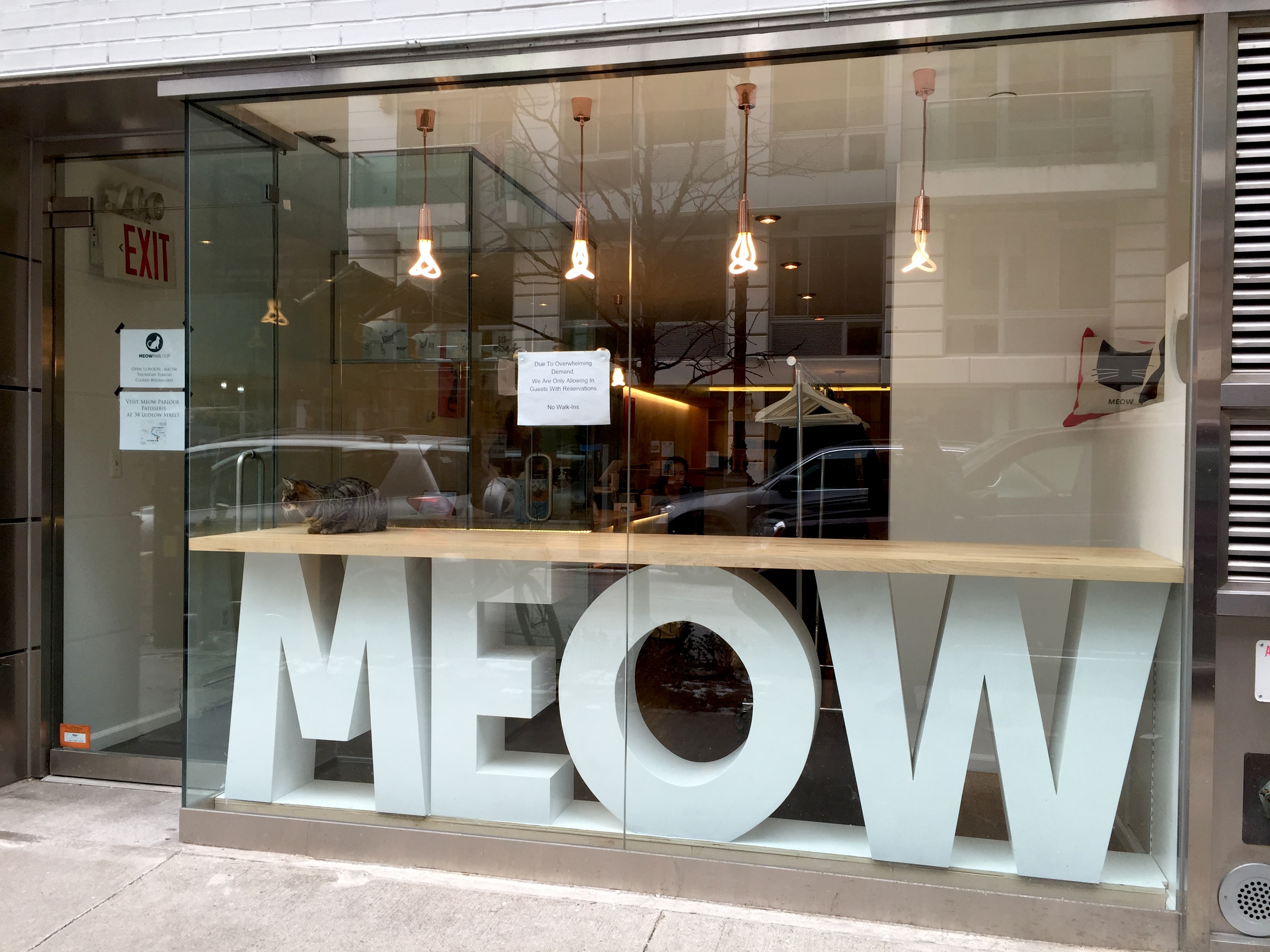
Cat lovers in New York City have rejoiced since mid-December, when Meow Parlour, the city’s first cat cafe, opened its doors.
For the uninitiated, lets explain what a cat cafe is. It’s not a place where you take your own cat to hang out and have coffee. It’s not a restaurant that has cats on the menu. It is a place where you can enjoy the companionship of cats while sipping on coffee and munching on a cat-shaped macaron.
The concept is such an established phenomenon in Japan that RocketNews24 published a guide to Tokyo’s best cat cafes last February. The craze is spreading across Asia and Europe, and the first cat cafe in the United States opened in Oakland last October. Based on the popularity of Purina ONE’s four-day, pop-up cat cafe in April 2014, where guests stood in line for more than three hours just to spend one hour with a cat and a coffee, it was only a matter of time before a permanent cat cafe would make its way to New York.
Enter Christina Ha and Emilie Legrand. Ha opened Macaron Parlour in 2010 with her husband, Simon Tung, and Legrand was one of their first employees. As the co-founders of Meow Parlour, they reached out to KittyKind, a non-profit, no-kill cat rescue and adoption organization run entirely by volunteers, to supply the cats with whom customers will cuddle. But in contrast to the cat cafes in Japan, the ultimate goal of the Meow Parlour/KittyKind partnership is for these cats to be adopted.
Many Japanese people are unable to own cats due to restrictions by their apartment buildings, so cat cafes give them the satisfaction of enjoying time with a cat without worrying about the responsibilities that come with cat ownership. At Meow Parlour, the focus is more on the cats’ needs rather than the customers’.
“We’re actively trying to adopt,” says Kathy Schecter, a volunteer adoption representative for KittyKind who spoke with JapanCulture•NYC in early December, before Meow Parlour officially opened. “For us the goal is to find homes for the cats. Christina and Simon adopted with us and fostered with us. It was a dream of theirs to do a cat cafe, and they came to us because they already had an established relationship, but they also respected our standards, how we take care of our cats and how we find them homes.”
▼ Puddin’
▼ Lucky Lemon
“Christina has been talking a lot about it being a place where we can showcase some of our special needs or hard-to-adopt cats,” says Miriam Hibel, who has been involved in rescuing cats for more than eleven years, handling adoptions, running the foster program, and being a member of the intake team that determines which cats are entered into their system.
Hibel defines “hard-to-adopt” as cats who are older – most people want kittens – or have imperfections. Currently living at Meow Parlour are Fang, a gorgeous 10-year-old, half-faced calico; and Cisco, an equally gorgeous kitty who had a back leg amputated as a result of a car accident. Hibel fears that cats such as Fang and Cisco could be overlooked at KittyKind’s adoption center, which is located at Petco in Union Square.
▼ Fang
▼ Cisco
“I think that our dream would be to have a shelter where people could interact with the cats,” says Hibel. “What the cat cafe provides is an opportunity for them to do that. A lot of our cats could be perfectly delightful, but they don’t really show well in a cage.”
“I’m here a lot, and I see sometimes cats get really scared of the noise, and [Meow Parlour] is a calmer environment where people can choose their cat and to make sure that owning a cat is for them,” says Schecter. “I see it as an opportunity for more people to interact with the cats in a different way from leaning into a cage and sometimes getting the wrong idea of their personalities . . . But I also think it allows people who don’t really know a lot about cats to experience the pleasure of playing with cats and get over the stereotypes they have. I can’t tell you how many people come in and say, ‘Oh yeah, my girlfriend made us get a cat, and now I’m a total cat person.’”
Several factors go into choosing which cats will be showcased at Meow Parlour. Including the older, hard-to-adopt cats, KittyKind selects cats that interact well with people and other cats. The volunteers also consider how long a cat has been waiting to be adopted and if a cat’s previous adoption was unsuccessful.
Hibel and Schecter tell the story of Julian, who was born last spring. Julian’s two brothers were adopted together, and he went to a home that already had an older cat. The dichotomy of the settled feline versus the rambunctious kitten proved to be the wrong match, and Julian was returned to KittyKind.
Eleven cats were roaming around Meow Parlour on a recent Sunday morning. Along with Fang and Cisco was Julian, who has become the most popular cat in the cafe because of his playful, outgoing personality.
▼ Julian
Hibel says that KittyKind receives around 40 inquiries each week from good samaritans who have found strays or from people who, for a variety of reasons, can no longer keep – or no longer want – their cats. The volunteers go through a detailed checklist before a cat is processed into the KittyKind adoption system, making sure the cats are spayed or neutered and have no medical conditions or are receiving treatment for their medical conditions.
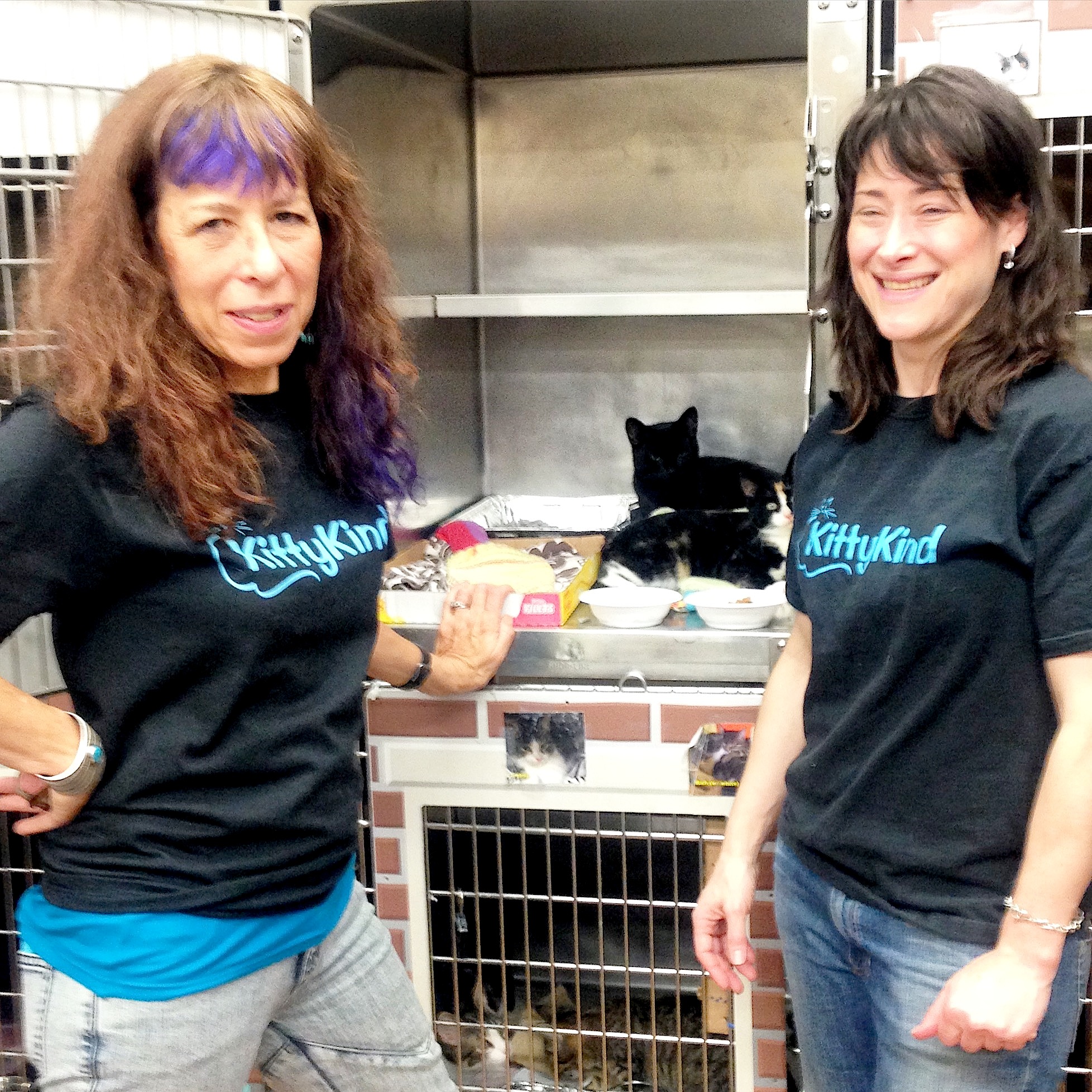
According to Hibel, KittyKind rescues and places 500 to 600 cats every year.
“There are always ten times as many cats who need us,” she says. “It breaks our heart because we can’t help every one of them, we can’t take in every one of them.”
Hibel is hopeful that KittyKind’s partnership with Meow Parlour will allow more cats to be rescued as well as increase awareness of the organization in general.
“I think it’s an opportunity for us to expand our intake,” says Hibel. “We are and always have been primarily a street rescue group in that we work with the good samaritan who has found a cat or a network of amazingly dedicated rescuers . . . We might expand our owner-surrendering intake because those might be candidates for the cafe because they’re coming from a home. It gives us a venue for a different type of cat we can take in. I think it will also maybe provide an opportunity for people who are interested in volunteering with us, so in that way expand our donor/supporter/volunteer network.”
In some ways Meow Parlour’s operation mirrors KittyKind’s meticulous process. Unlike the Purina ONE pop-up cat cafe, there are no crowds of crazy cat people standing in three-hour lines that wind around the corner. Instead, Meow Parlour implemented an online reservation system through which it controls the amount of guests at any given time, and there are no walk-ins. (Technically, each time slot is already booked until March, but there are occasional openings due to cancellations, so follow @MeowParlour on Twitter and Instagram to receive updates.)
▼ Meow Parlour’s cat-friendly furniture
Upon arrival at the appointed time, guests must sign a waiver, remove their shoes, and sanitize their hands before entering the clean and attractively appointed space. Once inside, guests are free to play with all of the cats and order snacks from the Macaron Parlour located around the corner. Customers interested in adopting the cats must fill out an application and meet with KittyKind’s adoption representatives, who will also schedule a home visit.
“We’re not a walk-out-the-door-with-a-cat kind of place,” says Schecter. “We do our best to make sure it’s a safe home.”
“We often encourage people if they are drawn to a cat to do a trial foster because we want the commitment to be serious,” says Hibel. “I think one thing the cat cafe will do is get them to really see the cat because no matter how much I say to someone, ‘I think this is a great cat’ and the intake questionnaire is saying it’s a great cat, if they don’t feel that connection, they might not give that cat a chance even on a foster . . . To that extent it might encourage people to take a chance on a cat.”
Editor’s note: Since the original publication of this article on JapanCulture•NYC, we’re happy to announce that at least two of Meow Parlour’s cats have been adopted and found new forever homes. Keep up the great work, guys!
▼ Checking out Hester Street
More from JapanCulture•NYC
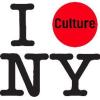
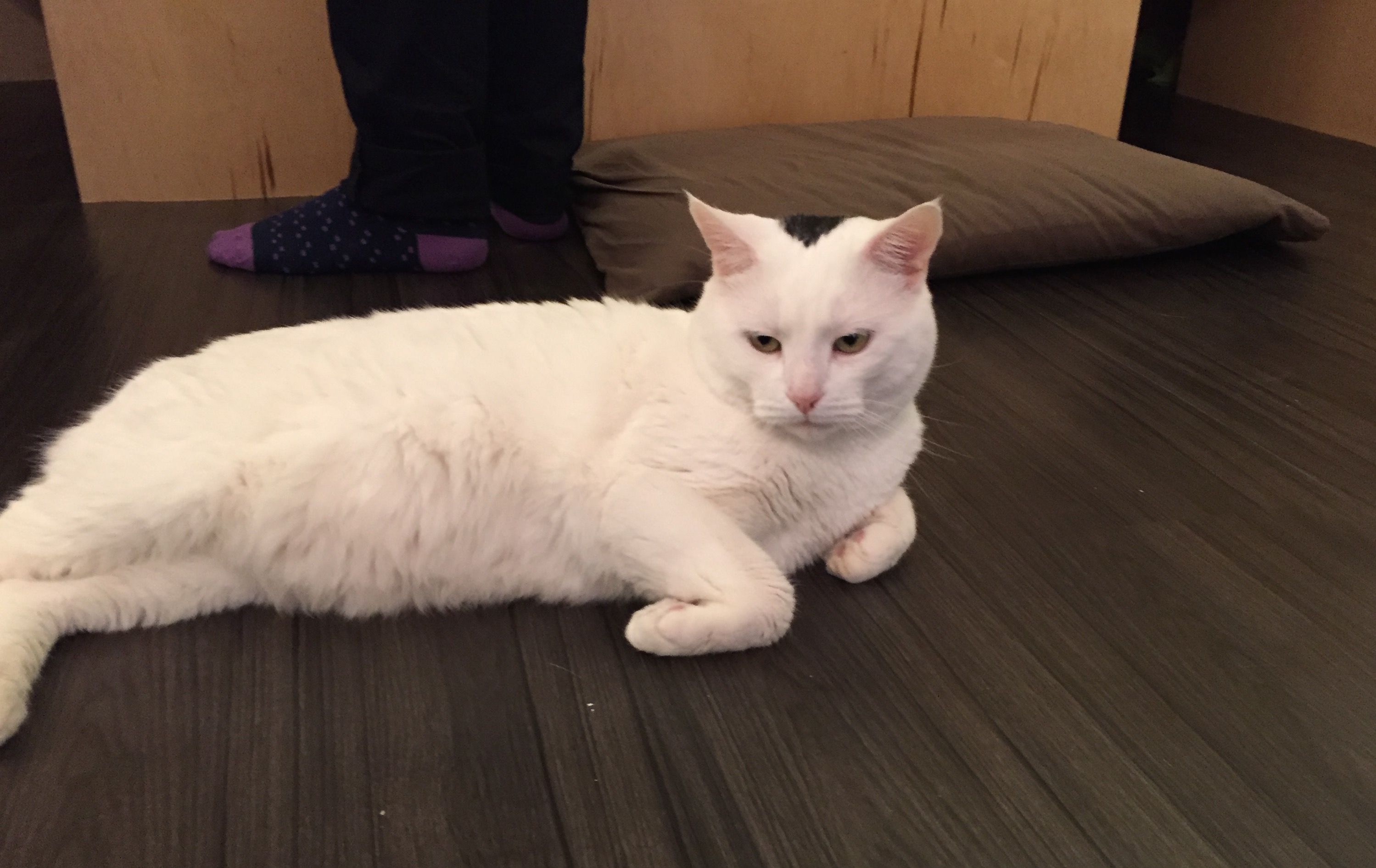
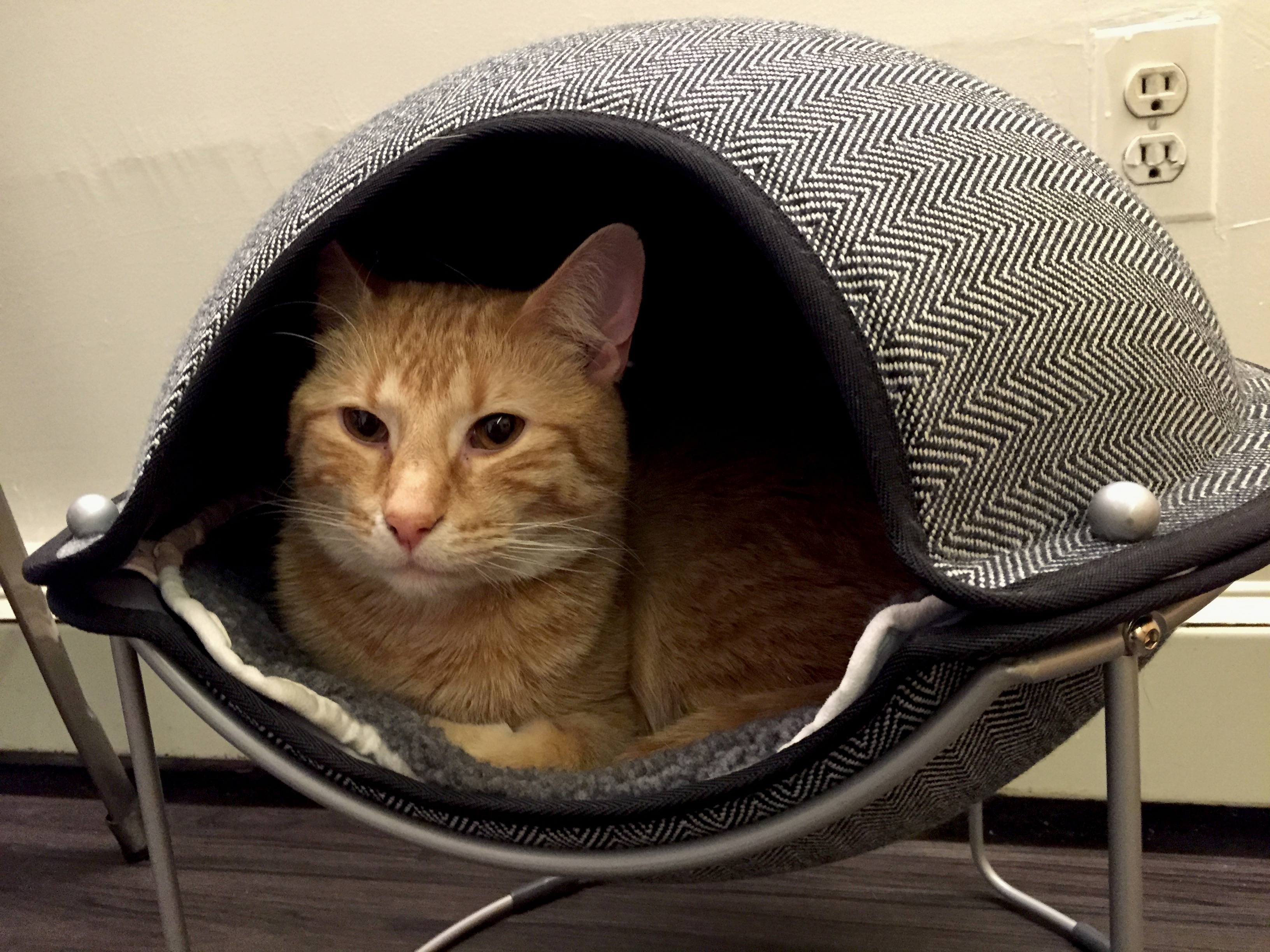
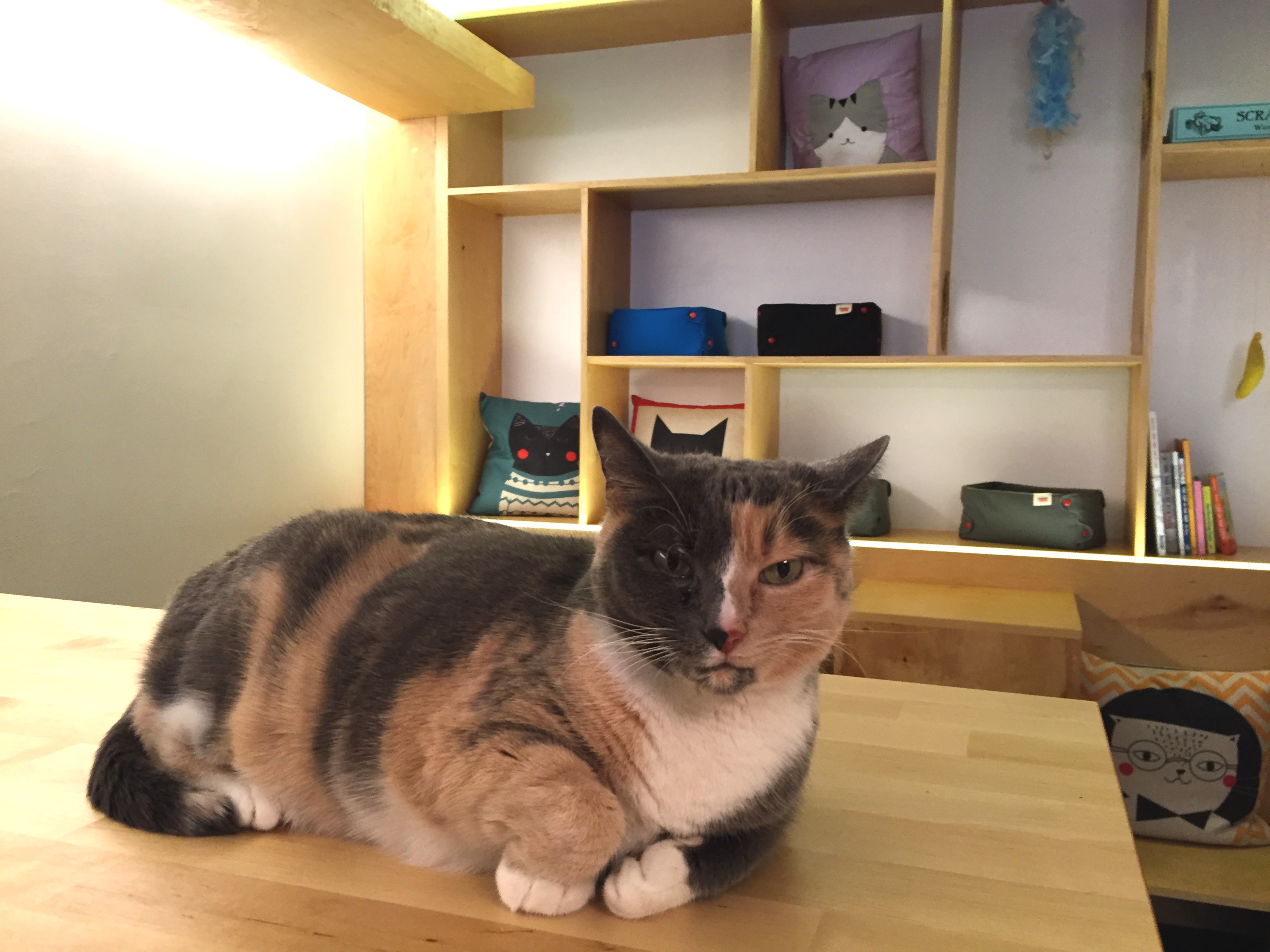

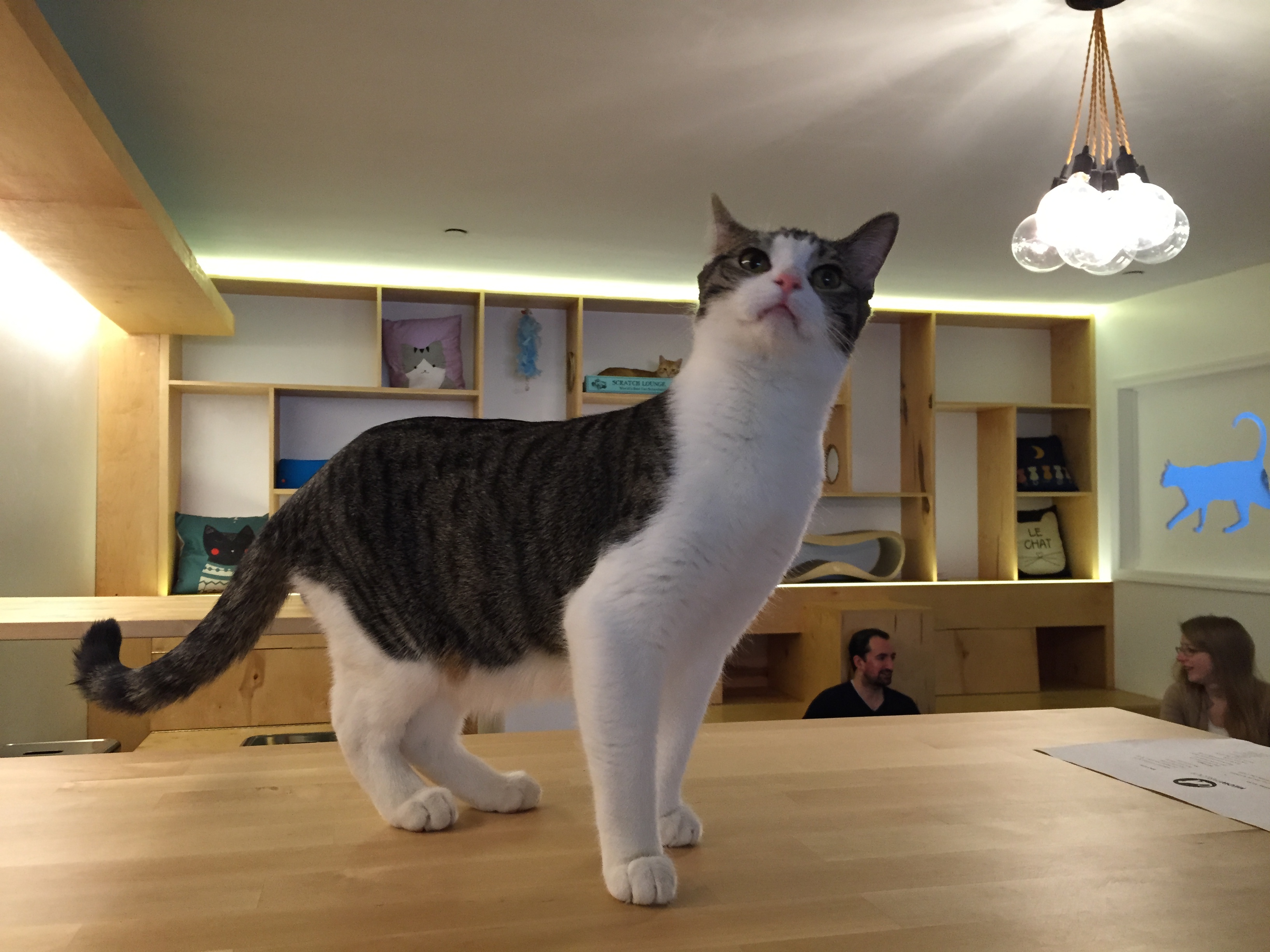
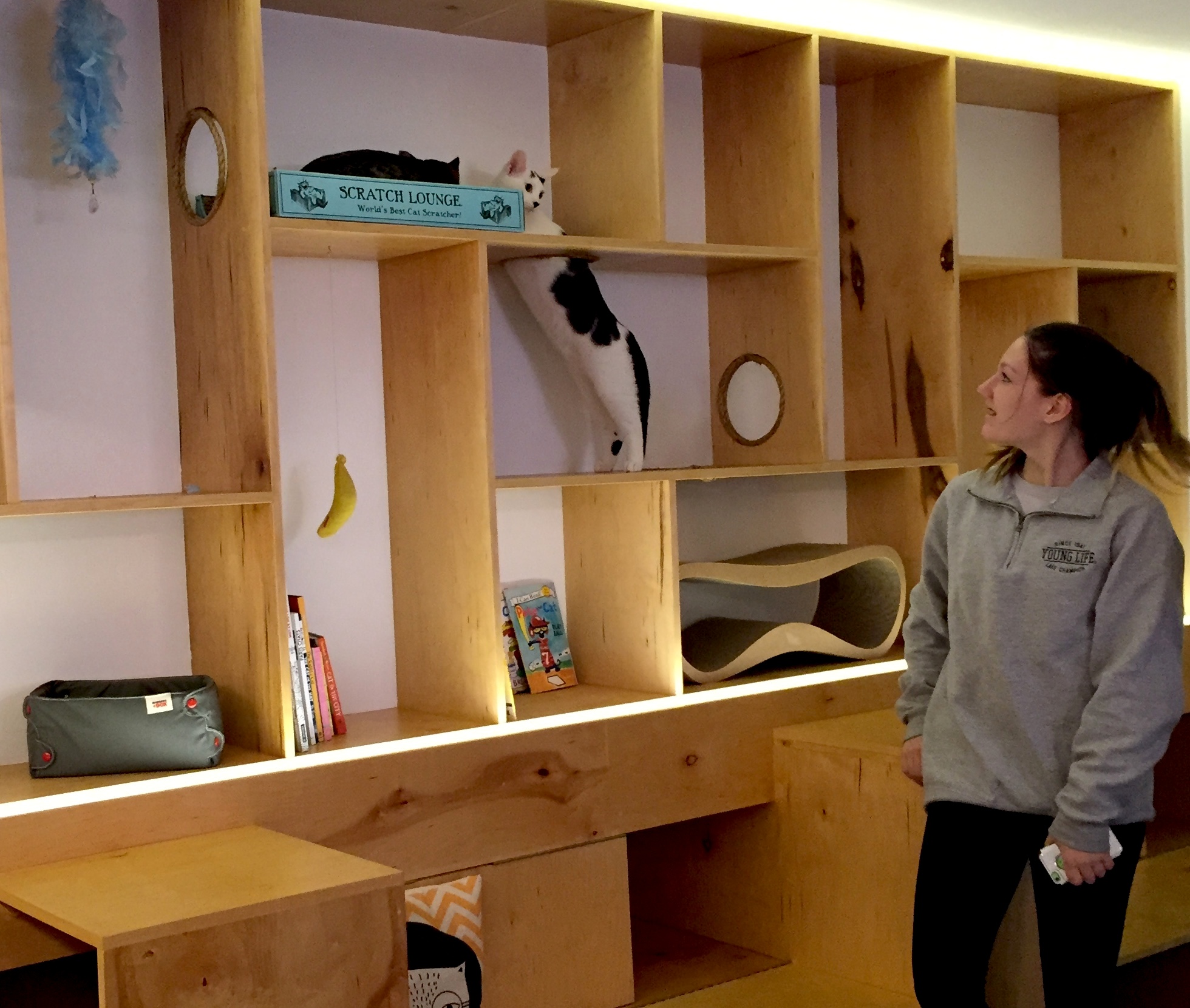
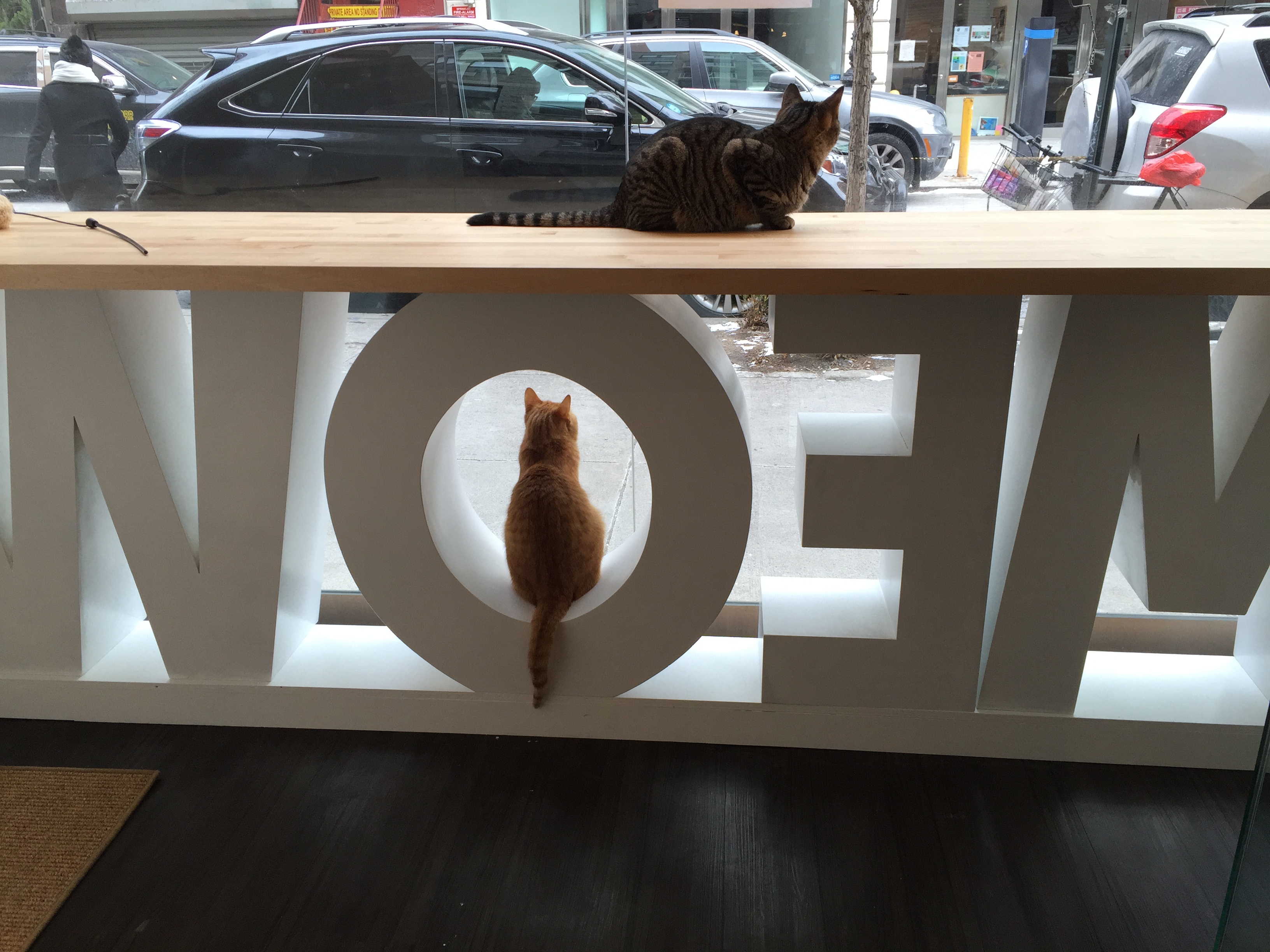
 Take a peek inside a Hong Kong cat cafe
Take a peek inside a Hong Kong cat cafe Cat cuddles for a cause: New rescue cat cafe plans to open soon in Tokyo
Cat cuddles for a cause: New rescue cat cafe plans to open soon in Tokyo You should visit Osaka’s first rescue cat cafe so I don’t have to
You should visit Osaka’s first rescue cat cafe so I don’t have to Eat not like a king, but like a cat at this cat food-themed restaurant in Japan
Eat not like a king, but like a cat at this cat food-themed restaurant in Japan We take a cat yoga class at a Japanese rescue cat cafe
We take a cat yoga class at a Japanese rescue cat cafe McDonald’s new Happy Meals offer up cute and practical Sanrio lifestyle goods
McDonald’s new Happy Meals offer up cute and practical Sanrio lifestyle goods All-you-can-drink Starbucks and amazing views part of Tokyo’s new 170 meter-high sky lounge
All-you-can-drink Starbucks and amazing views part of Tokyo’s new 170 meter-high sky lounge Studio Ghibli glasses cases let anime characters keep an eye on your spectacles
Studio Ghibli glasses cases let anime characters keep an eye on your spectacles Beautiful Sailor Moon manhole cover coasters being given out for free by Tokyo tourist center
Beautiful Sailor Moon manhole cover coasters being given out for free by Tokyo tourist center More foreign tourists than ever before in history visited Japan last month
More foreign tourists than ever before in history visited Japan last month Super Nintendo World expansion gets delayed for several months at Universal Studios Japan
Super Nintendo World expansion gets delayed for several months at Universal Studios Japan McDonald’s Japan releases a pancake pie for new retro kissaten coffeeshop series
McDonald’s Japan releases a pancake pie for new retro kissaten coffeeshop series The oldest tunnel in Japan is believed to be haunted, and strange things happen when we go there
The oldest tunnel in Japan is believed to be haunted, and strange things happen when we go there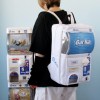 Gacha machine backpack is Japan’s hottest new fashion statement
Gacha machine backpack is Japan’s hottest new fashion statement All-you-can-eat yakiniku in Shinjuku for less than 10 bucks!
All-you-can-eat yakiniku in Shinjuku for less than 10 bucks! Disney princesses get official manga makeovers for Manga Princess Cafe opening in Tokyo
Disney princesses get official manga makeovers for Manga Princess Cafe opening in Tokyo Starbucks reopens at Shibuya Scramble Crossing with new look and design concept
Starbucks reopens at Shibuya Scramble Crossing with new look and design concept Beautiful new Final Fantasy T-shirt collection on the way from Uniqlo【Photos】
Beautiful new Final Fantasy T-shirt collection on the way from Uniqlo【Photos】 Is the new Shinkansen Train Desk ticket worth it?
Is the new Shinkansen Train Desk ticket worth it? Foreign English teachers in Japan pick their favorite Japanese-language phrases【Survey】
Foreign English teachers in Japan pick their favorite Japanese-language phrases【Survey】 Japanese convenience store packs a whole bento into an onigiri rice ball
Japanese convenience store packs a whole bento into an onigiri rice ball We try out “Chan Ramen”, an underground type of ramen popular in the ramen community
We try out “Chan Ramen”, an underground type of ramen popular in the ramen community Studio Ghibli releases Kiki’s Delivery Service chocolate cake pouches in Japan
Studio Ghibli releases Kiki’s Delivery Service chocolate cake pouches in Japan Japan’s bone-breaking and record-breaking roller coaster is permanently shutting down
Japan’s bone-breaking and record-breaking roller coaster is permanently shutting down New definition of “Japanese whiskey” goes into effect to prevent fakes from fooling overseas buyers
New definition of “Japanese whiskey” goes into effect to prevent fakes from fooling overseas buyers Our Japanese reporter visits Costco in the U.S., finds super American and very Japanese things
Our Japanese reporter visits Costco in the U.S., finds super American and very Japanese things Studio Ghibli unveils Mother’s Day gift set that captures the love in My Neighbour Totoro
Studio Ghibli unveils Mother’s Day gift set that captures the love in My Neighbour Totoro Foreign passenger shoves conductor on one of the last full runs for Japan’s Thunderbird train
Foreign passenger shoves conductor on one of the last full runs for Japan’s Thunderbird train Domino’s Japan now sells…pizza ears?
Domino’s Japan now sells…pizza ears? New Japanese KitKat flavour stars Sanrio characters, including Hello Kitty
New Japanese KitKat flavour stars Sanrio characters, including Hello Kitty Kyoto creates new for-tourist buses to address overtourism with higher prices, faster rides
Kyoto creates new for-tourist buses to address overtourism with higher prices, faster rides Sales of Japan’s most convenient train ticket/shopping payment cards suspended indefinitely
Sales of Japan’s most convenient train ticket/shopping payment cards suspended indefinitely Sold-out Studio Ghibli desktop humidifiers are back so Totoro can help you through the dry season
Sold-out Studio Ghibli desktop humidifiers are back so Totoro can help you through the dry season Japanese government to make first change to romanization spelling rules since the 1950s
Japanese government to make first change to romanization spelling rules since the 1950s Ghibli founders Toshio Suzuki and Hayao Miyazaki contribute to Japanese whisky Totoro label design
Ghibli founders Toshio Suzuki and Hayao Miyazaki contribute to Japanese whisky Totoro label design Doraemon found buried at sea as scene from 1993 anime becomes real life【Photos】
Doraemon found buried at sea as scene from 1993 anime becomes real life【Photos】 Tokyo’s most famous Starbucks is closed
Tokyo’s most famous Starbucks is closed One Piece characters’ nationalities revealed, but fans have mixed opinions
One Piece characters’ nationalities revealed, but fans have mixed opinions We asked a Uniqlo employee what four things we should buy and their suggestions didn’t disappoint
We asked a Uniqlo employee what four things we should buy and their suggestions didn’t disappoint Princesses, fruits, and blacksmiths: Study reveals the 30 most unusual family names in Japan
Princesses, fruits, and blacksmiths: Study reveals the 30 most unusual family names in Japan Japanese cat book explains how cats see their human owners, and it’s not as objects of respect
Japanese cat book explains how cats see their human owners, and it’s not as objects of respect Cat gets caught in tissue box, dances into our hearts
Cat gets caught in tissue box, dances into our hearts Japanese universities determine cats know the names of other cats
Japanese universities determine cats know the names of other cats Is Japan’s Cat Island in danger of turning into the Island of Fat Cats?
Is Japan’s Cat Island in danger of turning into the Island of Fat Cats? 7-Eleven’s edible cat paw proves Japanese convenience store sweets are on a whole other level
7-Eleven’s edible cat paw proves Japanese convenience store sweets are on a whole other level Traditional Japanese inn offers ultimate amenity: A cat companion to spend the night with
Traditional Japanese inn offers ultimate amenity: A cat companion to spend the night with Visiting Taiwan’s cat village, where the cats are ready for cuddles!【Photos】
Visiting Taiwan’s cat village, where the cats are ready for cuddles!【Photos】 Twitter user plays God with unholy cat and Roomba fusion
Twitter user plays God with unholy cat and Roomba fusion Shrine cat takes a nap in a Zen garden【Photos】
Shrine cat takes a nap in a Zen garden【Photos】 The best time to see Shinjuku’s giant new 3-D cat
The best time to see Shinjuku’s giant new 3-D cat Japan has a cat aptitude test to show off how much you know about our feline friends
Japan has a cat aptitude test to show off how much you know about our feline friends New Tokyo cat cafe filled only with “Apple Cats” who have feline AIDS
New Tokyo cat cafe filled only with “Apple Cats” who have feline AIDS W.T.F. Japan: Top 5 offbeat Japanese animal cafes【Weird Top Five】
W.T.F. Japan: Top 5 offbeat Japanese animal cafes【Weird Top Five】 Adorable videos of cats chirping at birds wins the Internet for us today
Adorable videos of cats chirping at birds wins the Internet for us today A singalong song from Japan to surpass “Paprika?” Presenting “Karaoke Neko-chan”【Video】
A singalong song from Japan to surpass “Paprika?” Presenting “Karaoke Neko-chan”【Video】
Leave a Reply